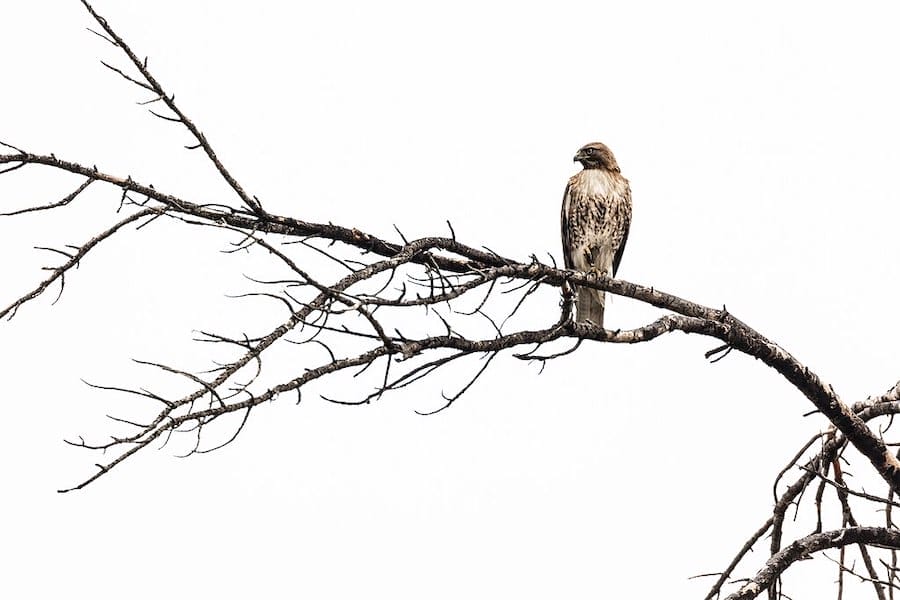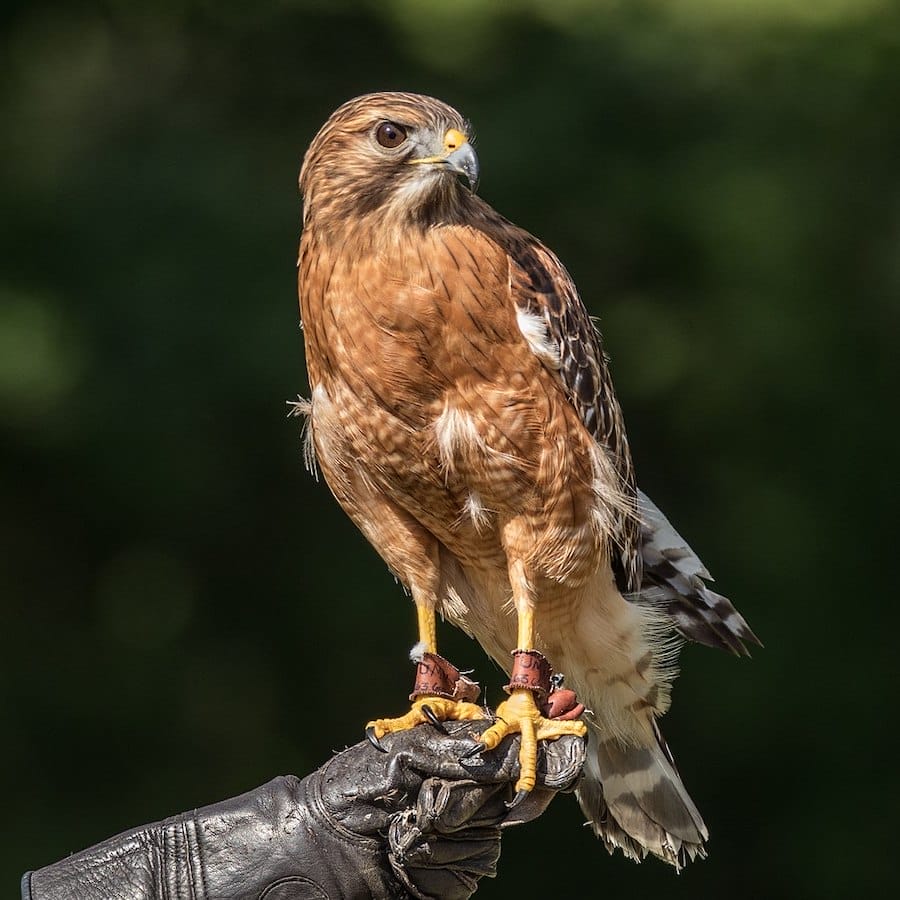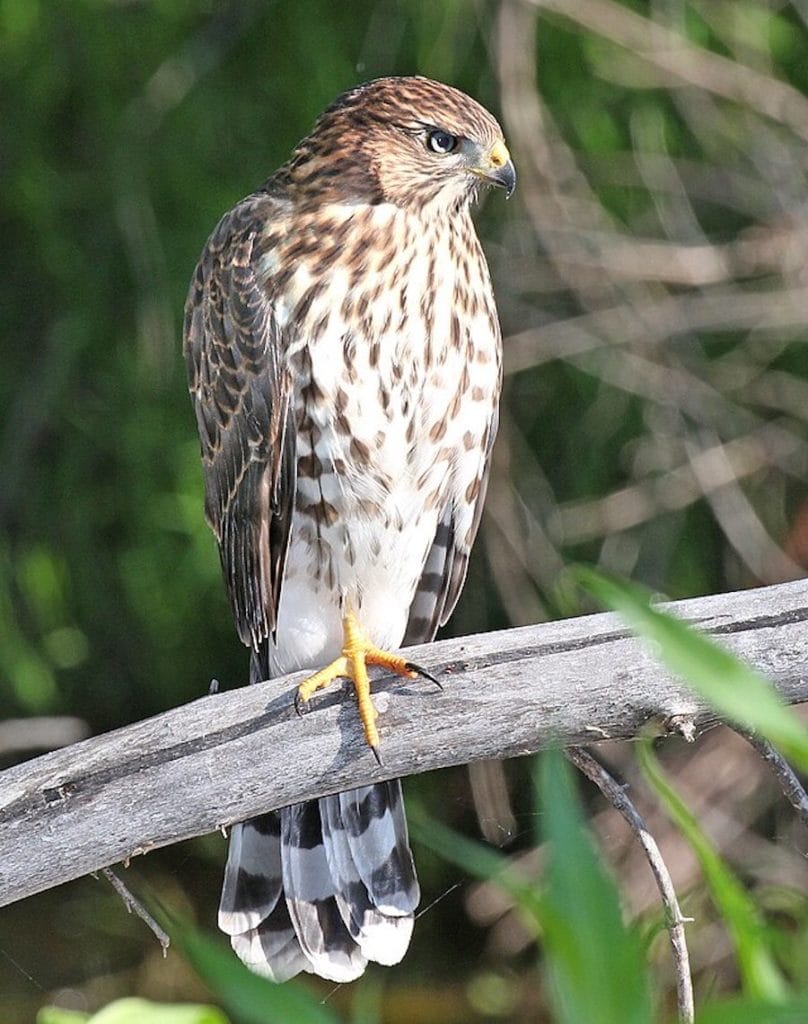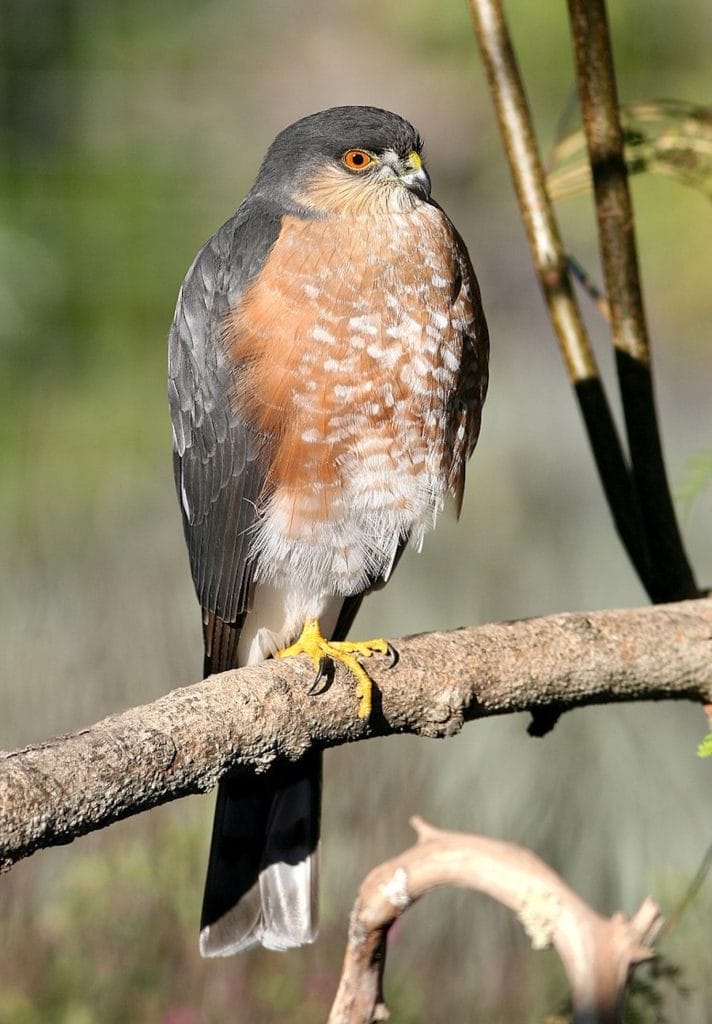

Uh oh...
It appears that you're using a severely outdated version of Safari on Windows. Many features won't work correctly, and functionality can't be guaranteed. Please try viewing this website in Edge, Mozilla, Chrome, or another modern browser. Sorry for any inconvenience this may have caused!
Read More about this safari issue.

Fall and winter road trips have become a cherished tradition for our family. The cooler weather is the perfect excuse to check off another park on our quest to visit all 52 of Arkansas’s State Parks. Traveling down the highways, we often spot hawks in the trees, on utility poles and along fence lines now that the leaves have fallen. We’ve turned this into a friendly competition, counting and identifying these majestic birds along the way. It’s a unique way for us to connect with nature and enjoy the state’s scenic beauty.
Birds of prey like hawks and their falcon relatives play a pivotal role in Arkansas’s ecosystem. Acting as natural pest controllers, they help keep the balance by managing the population of rodents and other small animals. This, in turn, contributes to the preservation of crops and the environment’s overall health. So, beyond being fun to spot, these raptors are a vital part of our local ecology.

NPS / Jacob W. Frank
The Red-tailed hawk is one of the most iconic hawks in the Natural State. Recognizable by its distinctive broad red tail, this bird of prey boasts remarkable eyesight and is often seen perched on fence posts or soaring high above open fields. Its impressive wingspan (which can nearly reach up to five feet) and keen hunting skills make it a true symbol of the wild.

Moving on to the Red-shouldered Hawk, a resident of Arkansas’ wooded areas, this bird features striking reddish-brown patterns on its shoulders. Its distinctive soundtrack adds to the natural symphony of the state’s forests. Keep an eye on the treetops, as these hawks prefer perching in the dense canopy.

Now, let’s talk about the Cooper’s Hawk. With a slate-gray back and finely barred underparts, this hawk is known for its agility and preference for densely wooded habitats. This species specializes in hunting smaller birds, employing stealth and surprise to capture its prey.

The Sharp-shinned Hawk, a smaller cousin of the Cooper’s Hawk, is recognizable by its short, rounded wings and long tail. This bird is a master of rapid, twisting flight. Its preferred hunting grounds include wooded areas, where it darts through trees in pursuit of songbirds.

It’s essential to note the distinction between hawks and falcons. While both belong to the same family of birds of prey, falcons, such as the Peregrine Falcon and the American Kestrel, are characterized by their pointed wings and remarkable speed. The Peregrine Falcon, renowned as one of the fastest animals on Earth, can reach incredible speeds during its high-speed dives, while the American Kestrel, with its vibrant plumage, is a master of hovering as it searches for prey.

The Mississippi Kite, a beautiful gray bird of prey that is sometimes confused with the Peregrin Falcon, is also worth mentioning. We have been blessed by a mating pair that has been nesting in a grove of trees on our property for the last few years. Their call is majestic, and I love watching them soar high above the treetops.
As you explore Arkansas, take the time to appreciate the diverse habitats that provide a home to these incredible hawks and other birds of prey. Whether you’re near the Ozark Mountains or along the banks of the Mississippi River, keep your eyes peeled for the soaring silhouettes and perched majesty of these birds. The natural beauty of Arkansas, combined with the thrill of hawk spotting, promises an unforgettable adventure.
We do the work.
You check your email.
Sign up for our weekly e-news.
Get stories sent straight to your inbox!








 Leave a Reply
Leave a Reply
We counted 126 hawks between Poplar Bluff, Mo and Little Rock last week, and 86 on our trip back.
The stretch between Newport and Walnut Ridge is the epicenter of Winter hawks population.
Such fun.